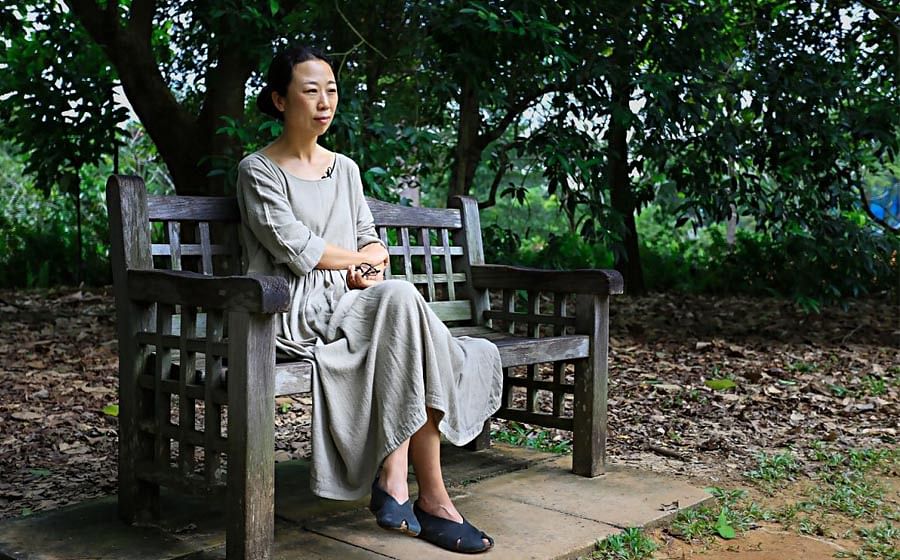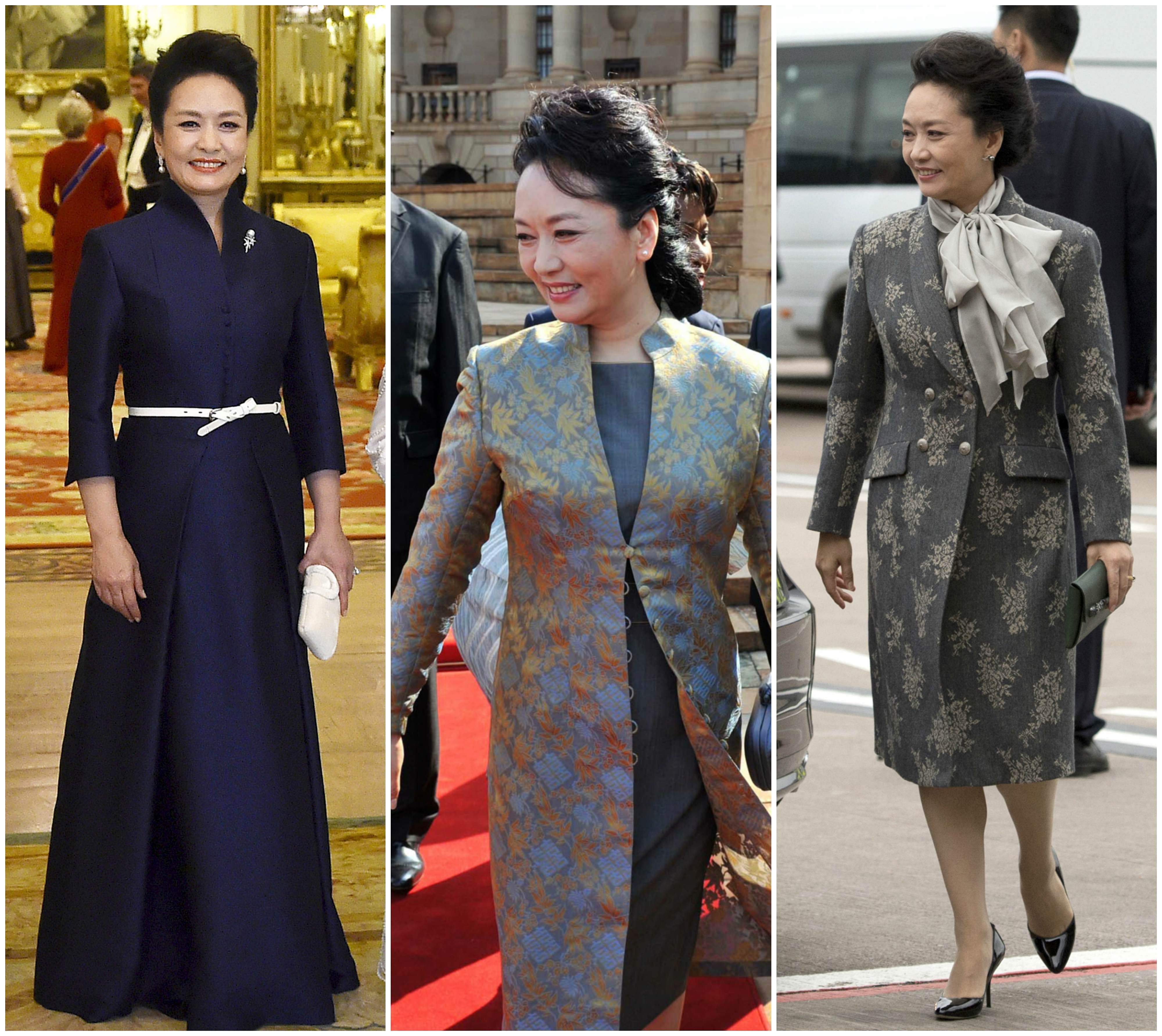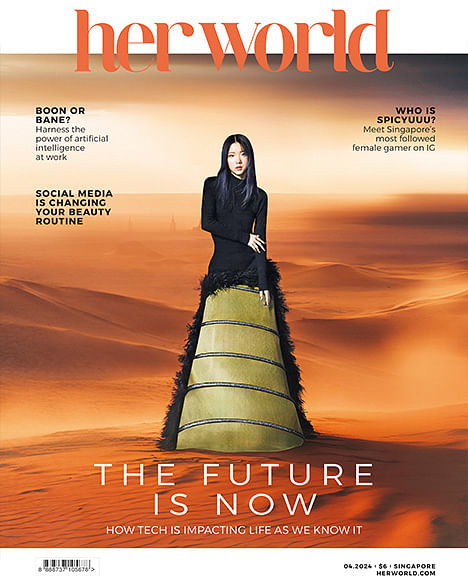
Photo: Ma Ke, Deryn Sim
There is a sense of anticipation before an encounter with enigmatic Chinese fashion designer Ma Ke, who was in town two weeks ago for the first time to meet local artisans and visit heritage sites. She is one of the most prolific designers in China, but is also reclusive, rarely granting interviews and declining requests to pose for photographs that will capture her full face. Simultaneously famous and obscure, she is the woman behind the popular Chinese label Wuyong. She operates her business out of a 100-year-old garden in rural Zhuhai – a city on China’s southern coast that is a world away from the glitz and glamour of fashion capitals Shanghai and Beijing.
Ma, 46, was the first Chinese designer to be invited to show at Paris Fashion Week in 2007, and her handmade couture pieces have been part of a line-up at London’s Victoria and Albert Museum.
She is also the designer who dresses Chinese First Lady Peng Liyuan, in the same way that former United States first ladies Jacqueline Kennedy had Oleg Cassini and Michelle Obama had Jason Wu.
Yet when Ma enters the room, there is little pomp and circumstance about her.
Reed-thin and with waist-long hair tied neatly into a plait, she is dressed in one of her own pieces – a loose ruby-red dress with a woven, rough-hewn quality to the material – and slippers.
She is wearing neither jewellery nor make-up, save for some henna designs that were painted on her hands while visiting Little India the day before. In person, she comes across as thoughtful, pensive and slightly shy. “I’m very happy to finally visit Singapore, this is my first time here,” she says when she meets The Straits Times at Lasalle College of the Arts, following a workshop with some students.
“In many ways, this is a country that feels familiar to me, even though I’ve never been here before. Outside of just being able to speak Mandarin here, it feels very international, as though it is a gateway to the world,” she says in Mandarin.
Her four-day trip to Singapore, hosted by the Singapore Tourism Board, involved visiting local sites as well as engaging in local crafts, of which she is a huge advocate.
She had a hands-on batik session with artist Sarkasi Said at the National University of Singapore Museum and a Peranakan beading session with Mr Edmond Wong, the corporate social responsibility director at traditional Peranakan rice dumpling and snacks specialist, Kim Choo Kueh Chang.
The simple life
 Photo: The Straits Times
Photo: The Straits Times
Her own couture label Wuyong consists of muted, earth-toned pieces that are handmade, employing traditional techniques such as loom weaving, hand sewing and colouring fabrics with natural dye.
“I don’t know yet how this trip will influence my own work and designs in the future,” she says when asked about whether the local arts scene has inspired her.
“But there was a lot of common ground that I saw between our traditional crafts, such as the use of natural dyes in henna, which were used to create these beautiful patterns on my hands. I relate a lot to this as I use natural dye in my pieces as well and I am very inspired by how culture here is preserved through traditional art forms.”
Indeed, it is this preservation of traditional crafts that seems to fuel Ma’s work today. For the maverick designer, clothes are not synonymous with fashion and she seems more interested in the spirit and stories in a garment than the endless pursuit of trends that the industry is associated with.
A graduate of the Suzhou Institute of Silk Textile Technology, she started her career working as a designer in a company in Guangzhou for three years. But even early on, she developed a distaste for enterprises that work to maximise profit, saying she always yearned to work in a company that “saw clothing and design as a dream, rather than a business”.
Failing to find such an enterprise, she set up her own ready-to-wear line, Exception de Mixmind, with her then-husband in 1996 and used it as a platform to create Easterninspired pieces, instead of chasing Western trends.
The label is known for combining a traditional Chinese aesthetic with modern style, and the duo built it into one of China’s first premier high-fashion brands. Her ex-husband continues to run today.
But it was during this time that Ma also found her interest for Chinese traditional craftsmanship growing, inspired by her many trips to remote villages in China.
While in search of traditional garment-making techniques, she saw how the lives of the villagers were insulated from fashion yet their clothes were treated like treasures, each with its own unique story as it was passed down from one generation to the next.
For Ma, this was a turning point. In 2006, following her divorce, she split from the lucrative Exception brand to set up her own design studio, Wuyong. Translating to “useless” in English, Wuyong was so named because she wanted to pick up what were deemed “useless” traditional skills and use them to come up with transcendent and inspiring creations.
Her haute couture pieces saw her become the first designer from China to be invited to show at Paris Fashion Week in 2007. Useless, a documentary made the same year about her business, had rave reviews at the Venice Film Festival.
Despite the accolades, Ma flew well under the radar until 2013, when it was revealed that she was the designer responsible for many of the First Lady’s looks during her first state visits abroad.
The sophisticated pieces – a far cry from the subdued style of Chinese first ladies of the past – established Ms Peng as a fashion icon and saw her added to Vanity Fair’s 2013 International Best Dressed list, even as it snubbed Michelle Obama.
Ma has always played down the curiosity about her role as Ms Peng’s designer, stating in the past: “If you eat a tasty egg, why would you want to see the hen?”
Still, Ma says, her relationship with Ms Peng – which started back in 2003, long before she was the First Lady – is still going strong today and she enjoys very much the chance to design for the confident and independent woman.
Today, the reclusive designer seems part designer and part philosopher, walking the talk with the way she designs, retails her pieces and lives her life.
“In my closet, I used to have more than one hundred pieces of clothing and dozens of pairs of shoes but after I moved to Zhuhai, I had a third of the total.
“Today, I only wear Wuyong pieces. My cosmetics, perfume and jewellery are also gone and the only thing I keep is an ordinary watch on my wrist – we really do not need too much other than some simple and austere things,” she says.
Her brand’s flagship store in Beijing, the Beijing Wuyong Living Space, occupies more than 1,200 sq m and is split into three parts: Home, Exhibition and Real Food.
People can purchase her clothing, textiles and furniture here. They can also visit the exhibitions she stages on disappearing handicraft skills and buy vegetarian food and beverages that are free of chemicals and genetic modification.
Every Wuyong piece has a name and birthday because it is regarded as a memory to pass on over the years. The lifelong after-sales service is perhaps the best example of the brand’s philosophy of treasuring things and reducing unnecessary consumption.
For Ma though, the ultimate goal is to see Wuyong become a global brand, one that is able to bring Chinese culture and tradition to the world.
“I don’t think Chinese culture is just for Chinese people – I think it will bring a lot of benefit beyond China to the world,” she says.
“I believe there is a uniqueness to our traditional culture, which emphasises peace, acceptance and a spiritual nature – things that I am trying to promote through my label.
“As Wuyong travels beyond China, I hope for it to play the lead role in reminding people to relook their own local traditional art forms and inspire them to keep these crafts alive.”
This article was first published at The Straits Times.
ALSO READ: JASON WU MAKES SINGAPORE HIS ASIAN DEBUT AND HINTS OF MORE TO COME

